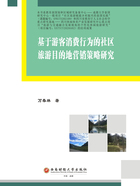
1.2 Problem Statement
The development of CBT in Thailand originated in the mid-1990s. It has been developed with the support of non-governmental organizations,academic institutions,the government,tourism enterprises and associations,Thai Agricultural Cooperative Bank and private sector partners for nearly 20 years. In the past 20 years,Thailand's CBT has experienced a tortuous developmental process,but also achieved good results. By 2010,more than 100 communities in Thailand have benefited from CBT development through the participation of community residents(Hummel,et al.,2013 ). Among the Southeast Asian countries,Thailand is also one of the first and well-developed countries to carry out CBT. Compared with other regions,the main factors of CBT development in Thailand are as follows:emphasizing on the needs of local community residents;carefully integrating the objectives of support agencies and partners;and fostering a sense of responsibility and belonging among community residents through bottom-up development approaches(Hummel,et al.,2013;Nitikasetsoontorn,2014;Sawatsuk,et al.,2018). According to the current market situation of CBT development in Thailand,most of the tourists come from Thailand,accounting for 90.7%,of which 50%~ 60% are women;only 9.3 % are international tourists(Hummel,et al.,2013;Boonratana,2011 ). Educational group(schools,universities and professional on study trips)is a very important market,which also accounted for about 60% of the proportion;the other 30% are leisure tourists;10% are natural-loving tourists(Hummel,et al.,2013). Meanwhile,during the development of CBT in Thailand,tourists are encouraged to experience the lifestyle of the local community through “responsible tourism”,so as to guide tourists to participate in the sustainable development of CBT(Sin and Minca,2014).
Meanwhile,CBT development in Thailand also has some confusion and bottlenecks. First of all,as a unique alternative to tourism products,CBT lacks a clear market positioning for a long period. The development of CBT pays more attention to the enthusiasm of community residents and does not further focus on subdividing the types of target tourists. Most of community residents have only shallow cognition about CBT. They don.t have enough knowledge about the philosophy of CBT and the development skills for CBT. At the same time,they also need to improve their multilingual skills(Nomnian,et al.,2020). The reflect in the practice of tourism is that CBT is an option,and visitors come by random. Community residents have no initiative to improve themselves,lack sufficient market awareness and their capabilities(Novelli,et al.,2017 ).Moreover,products provided by CBT are not abundant enough. Some community residents can provide their self-occupied houses and transform them into homestays. In addition,they can provide some traditional productive activities for visitors to experience. The majority of CBT development is relatively passive,and still lacks strong policy support,in spite of the improvement of policy support compared to the past. Furthermore,CBT can develop synergistically through the establishment of cooperative development mechanism(Phanumat,et al.,2015),but most of CBT doesn.t establish an effective cooperation mechanism in product design and marketing,and the development potential of CBT isn.t well cultivated.As a result,the market situation of most CBT is similar,and the lack of innovative marketing makes serious homogeneity of CBT products. In addition,Chinese tourists,one of Thailand's important source markets of tourism,have almost no knowledge of the development of CBT in Thailand. Therefore,it is necessary to make the marketing strategy innovative to promote the sustainable development of CBT better.
In summary,after 20 years of development,Thailand CBT has made certain achievements,mainly in resource supply,but it is limited in marketing,resulting in the limited sustainablity of CBT. With regard to the use of potential resources,more attention is paid to the construction of CBT system,but less attention to the target market incentives;touristic community resources supply,product development and market incentives are not well combined,and supply and demand is not dynamically balanced well enough to promote CBT and improve the well-being to the local residents;in particular,for the rising of Chinese Generation Y tourist niche market towards CBT,there is no active marketing. The sustainable development of CBT in Thailand needs to strengthen the system construction of resources supply based on the concept of CBT on one side;in the meantime,it also needs to stimulate and facilitate the connection between resource supply,product development and market incentives,and realizes the dynamic balance of CBT between supply and demand. It is a problem worth studying that how to explore the marketing strategy based on CBT concept,especially the innovative marketing strategy for the niche market of Chinese Generation Y tourists.